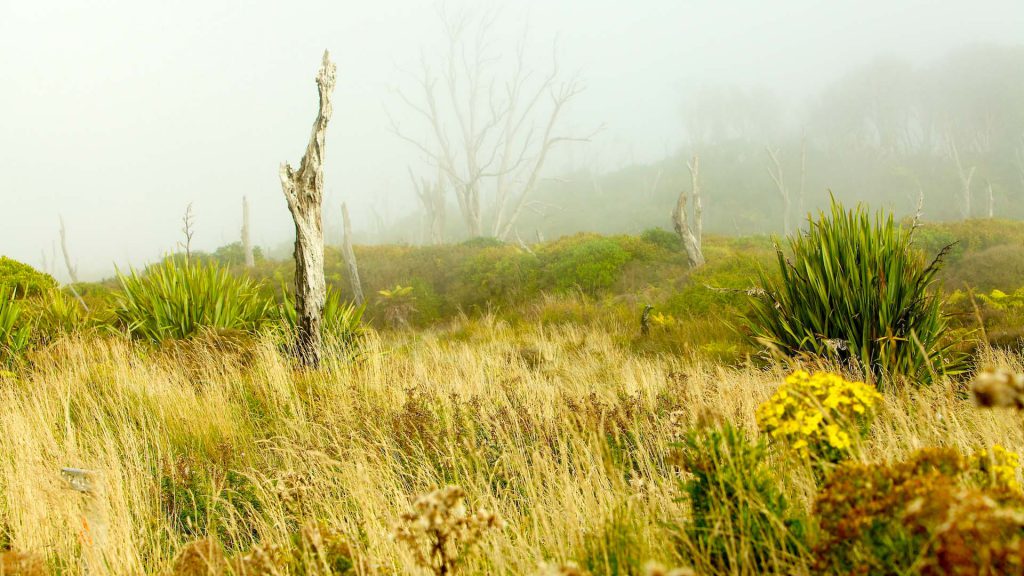Te Rere: The oldest yellow-eyed penguin reserve
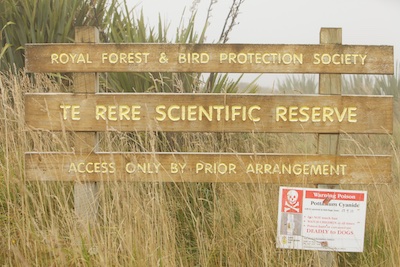
It all started in 1981, when Southland Forest & Bird obtained the consent of a farmer to fence off an important area for the nesting of yellow-eyed penguins in the Catlins. The first shrubs were planted to restore impacted sites and the habitat of the species. It took seven years before the acquisition of the 60 hectares required to effectively protect the colony of penguins.
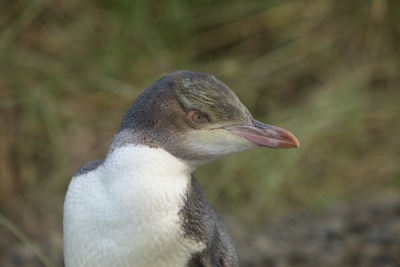
The Te Rere Reserve was set up in 1988 and is the oldest protection zone for yellow-eyed penguins in New Zealand. It was also the largest one with up to 100 adults until it was devastated by a fire in 1995, which killed more than 60 specimens! It was a disaster for the colony and a serious blow for the species, whose population has declined by 40% over the last 40 years.
The courageous involvement of Forest & Bird volunteers who had to start back again the restoration has largely paid off: 17 years later the original vegetation almost completely covers the area and the population of penguins is growing slowly but surely.
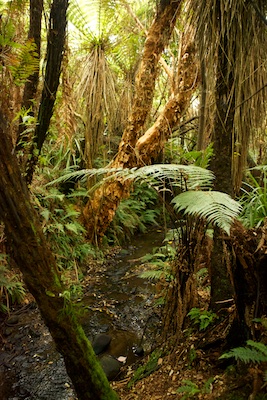
The Forest & Bird branch employs Fergus Sutherland – who runs this project with exemplary determination and extraordinary energy since its start – as a part-time warden. Fergus mainly monitors the reserve and controls the invasion of weeds and predators, which are the biggest threat to penguins.
Fergus Sutherland, equipped with a hat, a pair of gloves and a pruner hooked onto his belt, invites us to follow him closely. ‘The Te Rere Reserve does not have any track and consists of very thick forest areas, and it is better to avoid getting lost,’ he tells us while handing us a pruner, ‘and helping hands are most welcome at Te Rere!’ wearing a cowboy belt, we throw ourselves into the heart of the bush, whacking our way through the foliage while at the same time holding on to our notepad and camera, following our guide between the fern trees, streams and undergrowth, surrounded by a swarm of biting ‘mitch’ mosquitoes that stick to our skin.
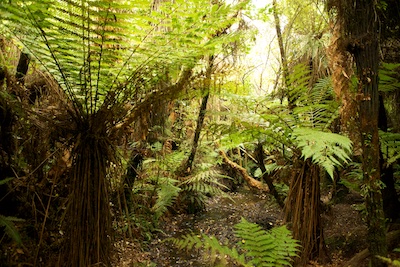
After having worked out how to use a pruner by practising on some stalks of flax, we catch up with Fergus, who very nimbly reached a vegetation cover where we come across a ferret trap. To our surprise he takes out some eggs and a tin of sardines in oil from his turquoise-blue bag. ‘It is not yet time for a lunch break, the food is used to attract stoats and ferrets, which particularly like these,’ says the reserve’s warden while breaking an egg and mixing it with the pieces of sardines placed in the trap. A few metres further on, we watch him laying poisoned bait in a trap after removing a dead rat. This action is repeated mechanically about 30 times during the day on traps that are placed in strategic locations.
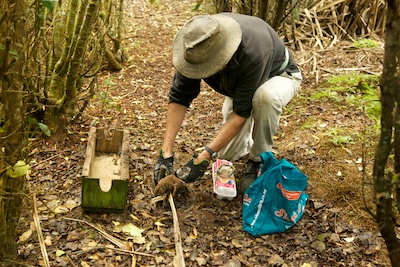
Eradicating rodents, the most dangerous predators of penguins
Fergus has been exploring, clearing and inspecting every inch of the reserve for more than 25 years. No one knows the place and inhabitants better than him.
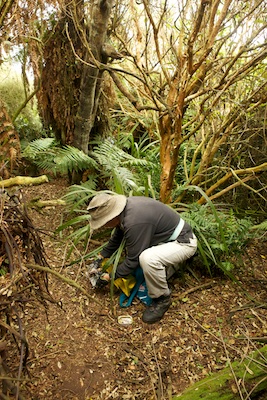
In total, he will capture only 6 prey during the day. A tedious but necessary task, however, for the protection on land of penguins and other rare species of birds such as the sooty shearwater, whose eggs inevitably attract rats, ferrets and stoats.
With an estimated population of more than 30 million in New Zealand, possums also represent a threat to the local habitat and avifauna. New Zealand is the largest user of the biodegradable 1080 poison which allows to quickly get rid of harmful mammal populations. Aerial application can kill 98% of possums and more than 90% of the rats in the target area! Its use, however, generates a good deal of controversy between conservation groups and possum breeders on one side and between hunters and animal rights activists on the other.
Concerns are also raised about the safety of drinking water supply in areas where the poison is used.
Yellow Eyed Penguin @HerveBre
For his part, Fergus prefers alternative solutions and has enrolled in a seminar to learn how to use a new possum trap that has just been released on the market. He ultimately hopes to be able to build a stronger fence around the reserve to permanently protect native species from predators.
Fire, the biggest threat to the reserve
In the meantime, members of the reserve continue to restore the forest and to plant various endemic trees and shrubs ‘like New Zealand flax (Phormium tenax), which grows very fast and is not devastated by possums, fuchsia trees and pittosporum’, explains the warden while showing the extent of the reserve.
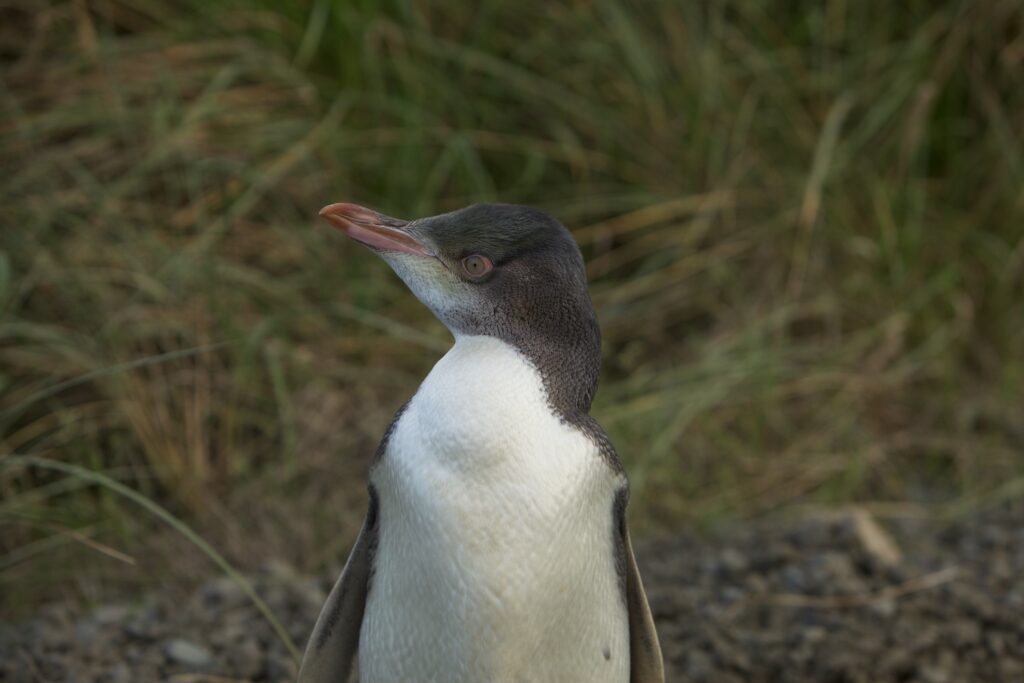
Yellow eyed penguin @HerveBre
Towering over the forest, dead podocarp trunks bear witness to the terrible fire that ravaged two thirds of the reserve in 1995. ‘Penguins coming back from the sea mechanically went back to their burrows: 60 of them perished in the fire,’ recalls Fergus, overwhelmed with emotion. Since 1995, more than 8,000 shrubs and trees have been planted at the reserve to limit the presence of pests, and above all to create firebreaks to reduce fire hazards.
From a land of ashes, the reserve has turned into a magnificent primeval forest. This resurrection would not have been possible without the determination of hard-working volunteers who have been heartily take care of it for 17 years.
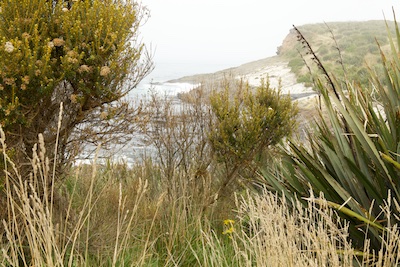
Terere nature reserve, Catlins @HerveBre
A solitary and discreet species
We follow Fergus who now crawls through a sort of tunnel buried in thick, thorny undergrowth, looking for burrows that are always built out of sight of other couples of penguins. ‘The pairs of this species are solitary and very discreet to the point that if two couples were to be visible to each other, the breeding season would be unsuccessful for the two couples!’ says Fergus.
The nest is even more isolated and hard to find as it is built at a distance from the sea in order to escape sea lions. There are growing numbers of these predators along the coast especially with the intensification of fishing off the coast of Sub-Antarctic Islands. The largest colonies which were established there find less food now in the area. Fergus has spotted a burrow and signals us to gently advance in order not to scare potential occupants.
We catch a glimpse of a couple of yellow-eyed penguins escaping from their refuge under a tree, leaving behind them an immaculate carpet of feathers. It is the moulting period for penguins which are more vulnerable and therefore even more cautious… We only had the time to see their yellow eyes and the strip of pale yellow feathers on the upper part of their head, which are characteristic of this species living exclusively in the southern part of New Zealand. The Maori people call them ‘hoihoi’, meaning noisy, because their cries that are more musical than other species of penguins.
Fergus carefully writes down his comments in a notebook where he keeps records of GPS points of the colony’s nests and new born penguins as well as their weight, etc. The colony gradually repopulated after the fire, when only 40 individuals survived. At the latest count, the population had doubled in 16 years. A number that is not high enough to ensure the sustainability of the colony, says Fergus with concern. ‘There are constant threats both on land and on the sea where they travel long distances and where we cannot intervene.’
The surprising resilience of yellow-eyed penguins
The warden, however, tries to remain optimistic. The team of volunteers has come a long way and has witnessed the incredible resilience of the species.
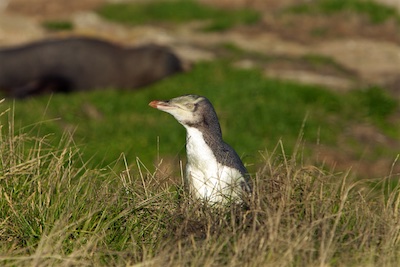
It now focuses on the rehabilitation of the habitat since the growth of the population of penguins depends on the health of the reserve. This also applies to other native species such as sooty shearwaters, a couple of which have recently been spotted for the first time. According to the naturalist, the appearance of this bird is a sign of the good condition of the Te Rere Reserve, which is his biggest achievement. ‘At the time the Government was subsidising the clearing of the forest and bulldozers were destroying nesting sites,’ remembers Fergus. ‘Besides being a reserve for penguins, Te Rere is now a sort of original island with primitive plant and bird species.’
A dream come true…

